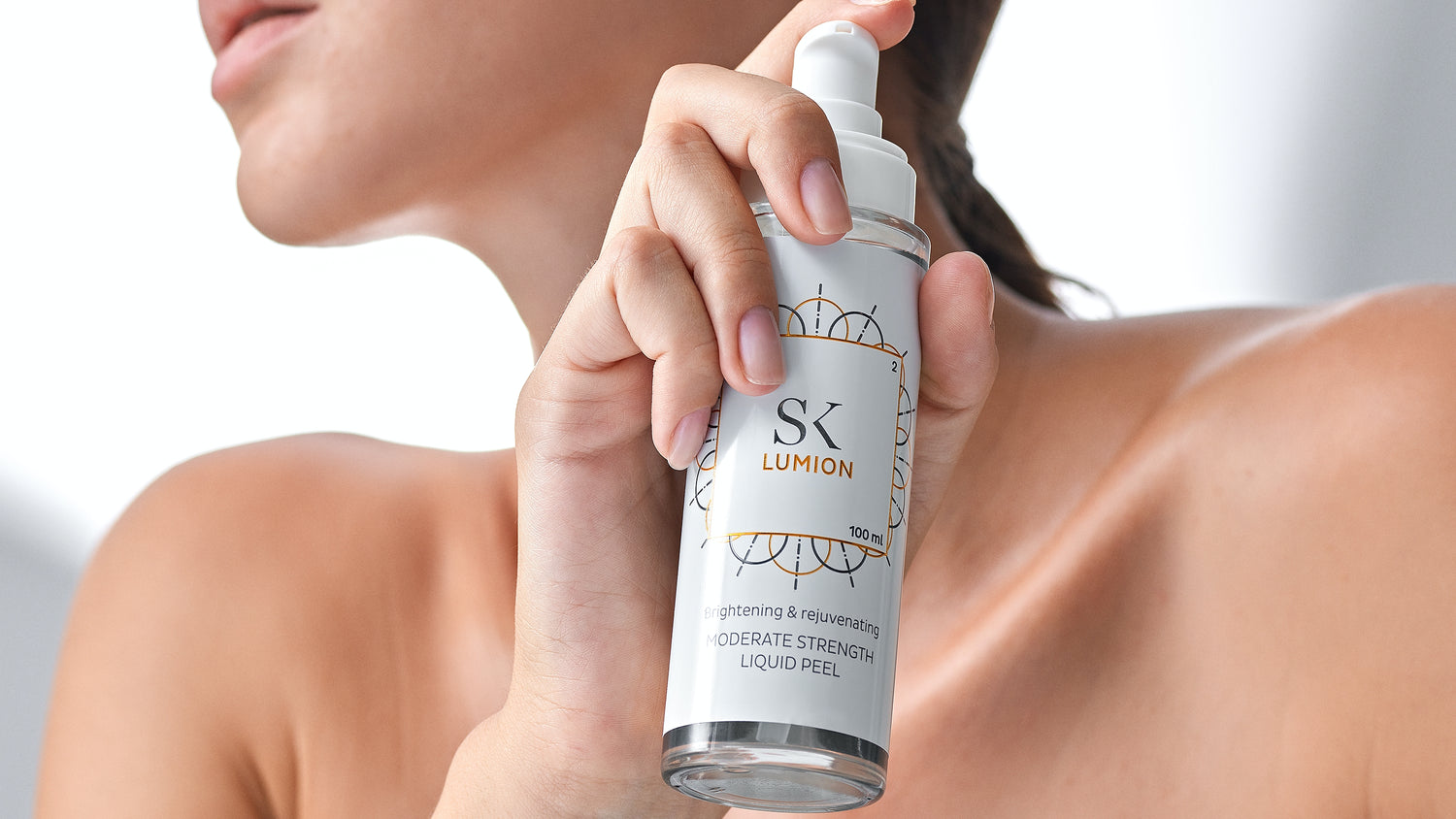Acids are the main ingredient in chemical exfoliants (peelings) in cosmetics, and we love them for their multiple effects: they help our skin function better, gently exfoliate dead skin cells, even out tone and texture, and make skin sparkling clean. Who wouldn't want that?
To begin with, acids can be divided into three basic groups:
BHA: salicylic acid
AHA: glycolic, lactic and mandelic acid
PHA: gluconolactone or lactobionic acid
These ingredients help the skin by speeding up the natural cell turnover, which does not function optimally due to aging of the skin (and often due to genetic factors, for example hyperkeratosis). Acids or keratolytics are used to regulate the activity of skin cells (keratinocytes) primarily for the purpose of achieving better skin texture or for cleaner pores in skin prone to irregularities.
Salicylic acid is the only fat-soluble and has a sebostatic effect, so it is recommended for oily skin prone to clogged pores and comedones, and acids from the AHA group are fantastic for improving texture and surface pigmentation, such as hyperpigmentation and treatment spots. PHA is the gentlest known variant of AHA acids, so it is an ideal choice for use on more sensitive skin. The synergistic combination of acids in one formulation will work best on multiple skin levels. For example, the combination of AHA + BHA in the product is ideal for treating acne and comedones (with age spots).
Although acids are not for everyone, especially not for individuals suffering from chronic skin diseases, most of us notice enormous benefits from their continuous use.
Let's start using it
When you are just introducing acids into your care, it is a good precaution to do a test on a small area of the skin . Conservatively apply the selected exfoliant on clean skin and monitor the reaction. Short-term burning and redness are completely normal phenomena when you are just introducing acids, and the skin should calm down within a maximum of half an hour.
If no negative skin reaction occurs within 48 hours, it is time for the first real application of acids. After the usual evening cleansing, apply two to three drops of Clarion or one to two pumps of Lumion to dry facial skin with your fingers. Both of these products contain acids, so do not use them together, you only need one product that you will choose according to your skin type and problem. Be sure to avoid the area around the eyes and do not apply acids to the mucous membranes. Stinging and transient redness may (or may not) occur again, but it should definitely not be an intense burning but a slight stinging, especially if you have open pimples or small sores from old pimples on your face. After the exfoliant, continue with care, avoiding similar comedolytics and keratolytics such as retinoids and azelaic acid. Don't worry, hyaluronic acid is not keratolytic, so now is a great time for abundant hydration with your favorite product.
Skip the acids the next night. At first, it is enough to use them every 3rd or 4th day, so later the frequency of use can be increased. Over time, the skin will probably become less red and stop burning completely, as it gets used to using this product, but extremely sensitive skin can always be a little red immediately after the application of acids, and this is completely normal as long as the redness calms down in a short time.
Over time, you will be able to use your favorite exfoliant several times a week, maybe even every night, but until then, definitely be careful not to overload your unaccustomed skin. And yes, get ready for a transformation!
Do not forget: when using a chemical exfoliant, it is advisable to protect the skin with a product with a UV protection factor during the day, since exfoliated skin is more sensitive to the negative effects of UV radiation.

Which SK exfoliant to choose?
If you have combination to oily skin accompanied by acne and comedones, choose Clarion , which contains a combination of 2% salicylic acid (BHA) and 4% glycolic acid (AHA).
If your skin is not so oily, but you occasionally have problems with surface imperfections such as spots, textural changes (pores and wrinkles) and some comedones, Lumion is for you, which contains a potent combination of 5% AHA (glycolic and lactic acid) and 1.58% PHA ( gluconolactone).

